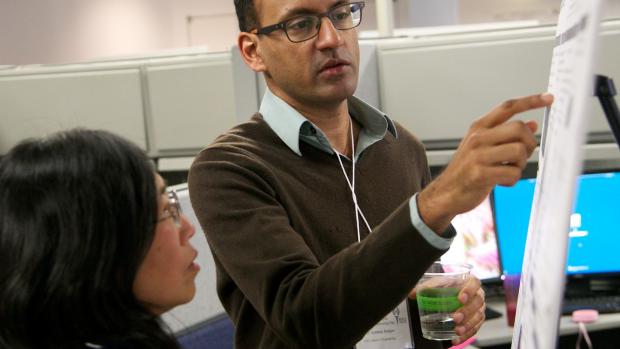NYU Wireless and NYU Stern School of Business Awarded Grant for Study of Millimeter Wave Networks
First Academic Economic-Engineering Analysis of mmWaves

The National Science Foundation (NSF) has awarded a four-year, $750,000 grant to NYU WIRELESS and the NYU Stern School of Business to evaluate the engineering and economic aspects of millimeter wave (mmWave) spectrum and resource management. The mmWave bands are a promising new set of frequencies for next-generation cellular networks that offer orders of magnitude increased data rates relative to current 4G systems. The goal of the grant is to develop new technologies, economic models, and spectrum policy to realize the full potential of these bands.
The importance of the mmWave spectrum is driven by the tremendous demand for additional bandwidth to handle the proliferation of mobile devices and increasing amounts of data transmission. While NYU WIRELESS, its industrial affiliates and a number of other research labs have been investigating the engineering aspects of the design of mmWave cellular systems, this grant is the first large-scale academic study to consider various economic, business and policy factors. The NSF grant addresses several open questions for use of these bands, including how the mmWave spectrum should be valued and auctioned by the Federal Communications Commission (FCC) and how various business entities should coordinate different infrastructure and spectrum resources.
According to principal investigator Prof. Sundeep Rangan, newly promoted director of NYU WIRELESS, “This is a significant investment on the part of NSF in advancing the field of mmWave communications. It’s gratifying to see the U.S. join together with other researchers in this important global effort to expand cellular communications capacity.”
The project brings together a unique inter-disciplinary team. Profs. Sundeep Rangan and Elza Erkip in NYU WIRELESS are with the Electrical and Computer Engineering Department at NYU Polytechnic School of Engineering and are experts in cellular systems and wireless communications technology in general, and mmWave technology specifically. Dr. Nicholas Economides is a Professor of Economics at the NYU Stern School of Business and is a leading authority in Internet and spectrum policy. Dr. Marco Mezzavilla, postdoctoral fellow at NYU WIRELESS who is leading multiple mmWave-related research activities, was also involved in writing this project proposal.
“The millimeter wave spectrum is a vital component of the next-generation of wireless standards, which are being called ‘5G’, and we at the National Science Foundation have been funding extensive fundamental research in this area over the past three years,” said Thyaga Nandagopal, NSF Program Officer for the EARS Program. “This particular project aims to demonstrate the feasibility of a large-scale millimeter-wave wireless data network that can operate at Gigabit speeds. It also seeks to identify regulatory and policy factors that will ensure the successful deployment of such networks in the commercial sphere.”
Given the size and importance of the global cellular industry, estimated at more than $1 trillion, the research that will be conducted in this project has the potential to shape the evolution of spectrum policy. It is highly likely that mmWave bands will play a prominent role in the next generation of standards, given the severe shortage in conventional cellular bandwith. MmWave wireless technology is expected to support content at speeds exceeding 10 gigabits per second, which is a thousand times today’s current mobile phone download speed.
NYU WIRELESS has already played an important role in the development of mmWave cellular systems, having conducted some of the first measurements and capacity analyses. Together with NSF, NYU WIRELESS affiliates have provided significant support of this groundbreaking research. Their research work was cited heavily by the FCC in last year’s Notice of Inquiry in the study of the mmWave bands. This NSF project takes a unique, holistic approach, from its experimental design to experimental validation to policy, and includes close collaboration with leading communications companies and the FCC. All parties ultimately will be involved in putting economic models in place that ensure resource sharing pricing and licensing mechanisms to achieve the full value of the mmWave spectrum.




